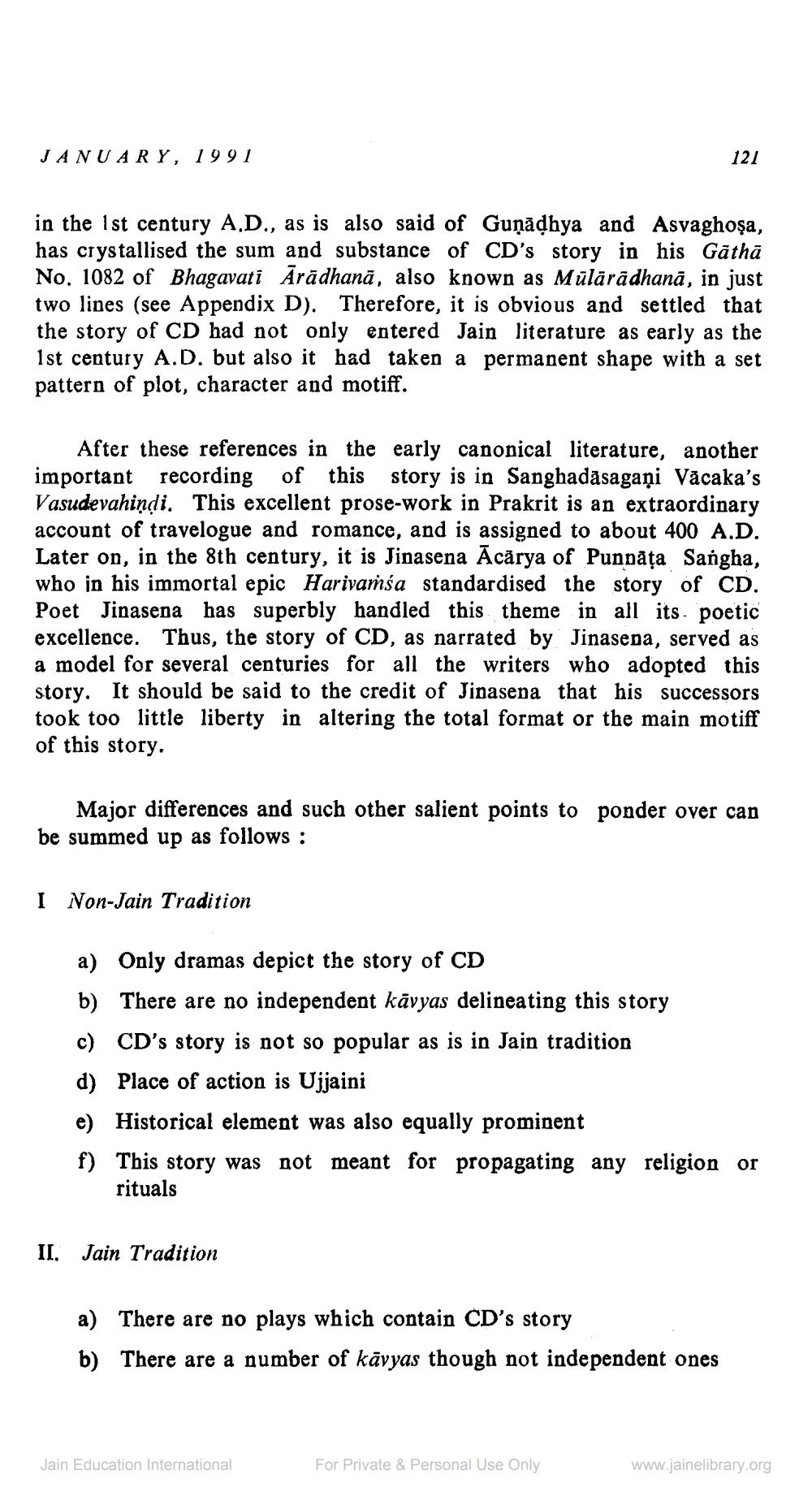________________
JANUARY, 1991
in the 1st century A.D., as is also said of Guṇāḍhya and Asvaghosa, has crystallised the sum and substance of CD's story in his Gāthā No. 1082 of Bhagavati Ārādhanā, also known as Mūlārādhanā, in just two lines (see Appendix D). Therefore, it is obvious and settled that the story of CD had not only entered Jain literature as early as the 1st century A.D. but also it had taken a permanent shape with a set pattern of plot, character and motiff.
After these references in the early canonical literature, another important recording of this story is in Sanghadasagaņi Vācaka's Vasudevahindi. This excellent prose-work in Prakrit is an extraordinary account of travelogue and romance, and is assigned to about 400 A.D. Later on, in the 8th century, it is Jinasena Acarya of Punnata Sangha, who in his immortal epic Harivamsa standardised the story of CD. Poet Jinasena has superbly handled this theme in all its poetic excellence. Thus, the story of CD, as narrated by Jinasena, served as a model for several centuries for all the writers who adopted this story. It should be said to the credit of Jinasena that his successors took too little liberty in altering the total format or the main motiff of this story.
Major differences and such other salient points to ponder over can be summed up as follows:
I Non-Jain Tradition
121
a) Only dramas depict the story of CD
b) There are no independent kāvyas delineating this story
c) CD's story is not so popular as is in Jain tradition
d) Place of action is Ujjaini
e) Historical element was also equally prominent
f) This story was not meant for propagating any religion or rituals
II. Jain Tradition
a) There are no plays which contain CD's story
b) There are a number of kavyas though not independent ones
Jain Education International
For Private & Personal Use Only
www.jainelibrary.org




